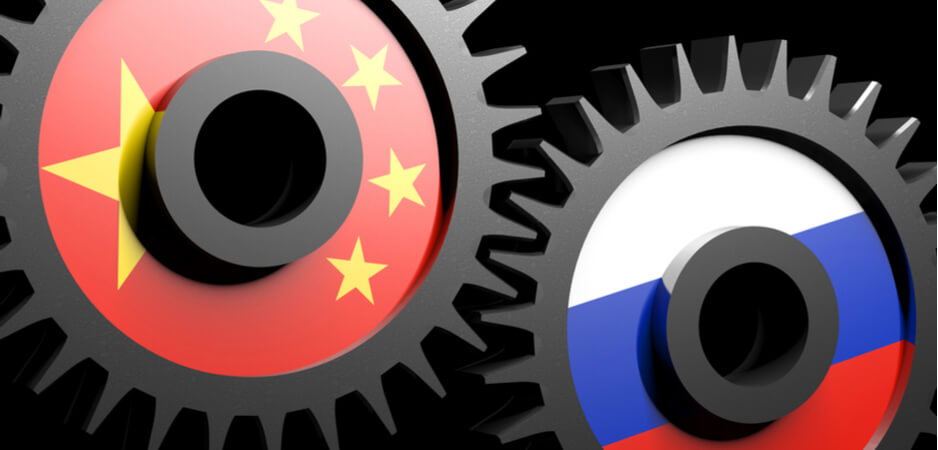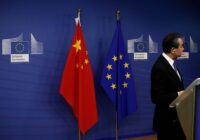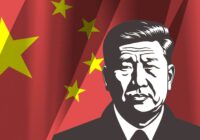As US foreign policy in the region shifts dramatically, Moscow and Beijing align on many MENA issues, in no small part due to shared concerns about Washington’s conduct in the region.
While America’s 2020 presidential race is already in full swing, Washington continues to project a confusing and contradictory foreign policy. Countries across the Middle East and North Africa (MENA) are in a lurch in terms of their strategic planning. Under President Donald Trump, the United States has shifted the tactical environment around the region and, by focusing on Iran and extremism, is attempting to establish a new order in the region fed by the interests of Saudi Arabia, the United Arab Emirates, Egypt and Israel.
These states seek the downfall of Iran’s regime and are egging Washington to confront Tehran more aggressively. Other issues include Jared Kushner’s peace plan, which needs to be understood in the local context that the ideas contained within originate from Abu Dhabi.
As US foreign policy in the region shifts dramatically, Moscow and Beijing undoubtedly align on many MENA issues, in no small part due to shared concerns about Washington’s conduct in the region. The Russians and Chinese have secured major geopolitical achievements across MENA throughout the 21st century, which both Moscow and Beijing will built on as they seek to use the region as a stepping stone, or lily pad, to Africa.
These two powers have strategic and tactical air, land and sea areas of operations and commerce throughout the region, based on an emerging hub-and-spoke strategy that will connect Russia and China to Africa. For example, the Chinese have been relying on the Emirates as a hub for China’s trade with Africa for many years, and the Saudi leadership is determined to establish the kingdom as another main hub connecting Asia and Africa.
Russia’s push into the region has been augmented naturally by China’s ambitious Belt and Road Initiative (BRI). The BRI snakes and meanders in all types of logistical directions, emphasizing major urban areas and ports. Most important to the BRI is the concept of interconnectivity. The fact that both Russia and China see their futures linked to infrastructure, finance and commodity futures in terms of sovereignty is helping to split the Middle East and North Africa into pockets of activity that advance the East against the West. This bifurcation has strategic ramifications for the United States and its European allies. American foreign policy decision-makers are slow to recognize this sharp divide and thus must understand the larger geopolitical and geostrategic stakes.
US foreign policy in the Middle East regarding the behavior of Russia and China also focuses on commodities and modes of transportation. Washington is using tactics such as sanctions, tariff negotiations and other types of tools to bend the will of Middle Eastern states in terms of a new type of transactional relationships that is then used to complete arms sales or other necessary fiscal moves. The lifting of sanctions on Russia’s aluminum giant Rusal by the United States benefited the UAE, whose own aluminum industry is one of the world’s largest producers. Too many observers miss this triangulation, which is an important part of how the US conducts itself in the region.
Gold is another commodity, as is wheat, and how US foreign policy contends with these commodities bumps up against Russian and Chinese interests in the MENA region. Cobalt is also of critical importance to the current — and the fourth — industrial revolution. Bringing goods to market in a hub-and-spoke system augmented by forces, both government and private, to protect these arteries of revenue. Both Moscow and Beijing are using their new levers of power to influence and appeal to Arab leaders including weapon systems, financial credits and tools, as well as energy investment, just to name a few. For these leaders, Moscow and Beijing are playing three-dimensional chess against the Western tic-tac-toe.
Thus, Arab states are now increasing their ties to Russia and China at Washington’s expense. The pull of both Russia and China at a time of an incoherent US foreign with Trump at the helm — against the backdrop of the UK’s Brexit saga, Western policy confusion and loss of focus driven by emotion — is seen by Arab states of further evidence of their strategy to lean East in case the West, or specific players in the West, lose or shift their influence in the region.
That strategic swing is currently accelerating. Their mutuality of interest emerging — Arabs and Russia/China — is a direct challenge to US interests in the region. With the foundation being laid for a smaller US presence, Russia and China will gain even greater sway over MENA related issues. For US foreign policy, the challenge directly relates to the future of bilateral relationships between America and Arab states.
Finally, the biggest challenge for US foreign policy in the region is the greater nexus and symmetry between Russia, China and the MENA region is Artificial Intelligence and the influence of AI in various sectors of defense and economy. The Gulf Arabs, along with Russia and China, are producing and using AI to monitor, police and transact. The national security components of this triangulation are tending toward giving the East a leading edge. There is a very good reason behind why Saudi Arabia is introducing Chinese into its educational curriculum. Here, the United States is one percent behind the curve as the world bifurcates.
The views expressed in this article are the author’s own and do not necessarily reflect Fair Observer’s editorial policy.
Support Fair Observer
We rely on your support for our independence, diversity and quality.
For more than 10 years, Fair Observer has been free, fair and independent. No billionaire owns us, no advertisers control us. We are a reader-supported nonprofit. Unlike many other publications, we keep our content free for readers regardless of where they live or whether they can afford to pay. We have no paywalls and no ads.
In the post-truth era of fake news, echo chambers and filter bubbles, we publish a plurality of perspectives from around the world. Anyone can publish with us, but everyone goes through a rigorous editorial process. So, you get fact-checked, well-reasoned content instead of noise.
We publish 2,500+ voices from 90+ countries. We also conduct education and training programs
on subjects ranging from digital media and journalism to writing and critical thinking. This
doesn’t come cheap. Servers, editors, trainers and web developers cost
money.
Please consider supporting us on a regular basis as a recurring donor or a
sustaining member.
Will you support FO’s journalism?
We rely on your support for our independence, diversity and quality.







